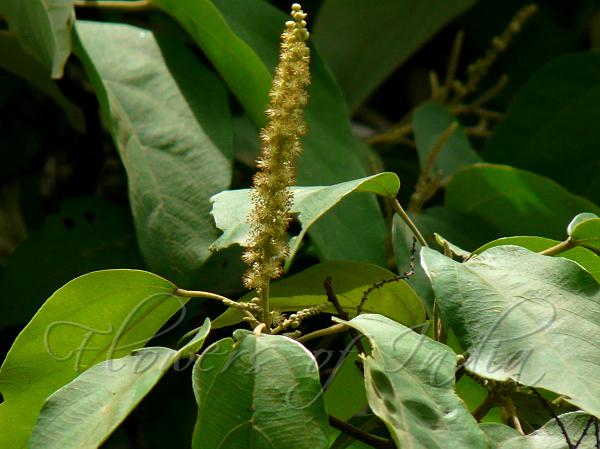|
| Kaamla Tree |
|

|

| File size | 649449 |
| Original date | 7/5/08 1:05 PM |
| Resolution | 2048 x 1536 |
| Flash | Flash fired |
| Focal length | 82.8mm |
| Exposure time | 1/320s |
| Aperture | 5.0 |
| Focus Distance | |
| Metering Mode | Multi-segment |
| Camera make | Panasonic |
| Camera model | DMC-FZ18 |
| Sensor type | OneChipColorArea |
|
|
|
|
Photo: |
Botanical name: Mallotus philippensis Family: Euphorbiaceae (Castor family)
Kamala Tree (pronounced kaamlaa) is a tree found throughout India. It has been in use as medicinal tree in India for ages. The tree can grow
up to 10 m tall. Alternately arranged, ovate or rhombic ovate leaves are
rusty-velvety. Male and female flowers occur in different trees. Female
flowers are borne in lax spike like racemes at the end of branches or in
leaf axils. Male flowers occur three together in the axils of small bracts.
Capsule is trigonous-globular, covered with a bright crimson layer of
minute, easily detachable reddish powder. Kamala is supposed to be a very
useful tree. It is source of Kamala dye which is used in colouring silk
and wool. It is used as anti-oxidant for ghee and vegetable oils. Oil is
used as hair-fixer and added in ointment. Seed oil is used in paints and
varnishes. Seed cake is used as manure.
Medicinal uses: According to Ayurveda, leaves are bitter,
cooling and appetizer. Fruit is heating, Purgative, anthelmintic,
vulnerary, detergent, maturant, carminative, alexiteric and useful in
treatment of bronchitis, abdominal diseases, spleen enlargement etc.
According to Ayurveda, leaves are bitter,
cooling and appetizer. Fruit is heating, Purgative, anthelmintic,
vulnerary, detergent, maturant, carminative, alexiteric and useful in
treatment of bronchitis, abdominal diseases, spleen enlargement etc.
Medicinal uses:
 According to Ayurveda, leaves are bitter,
cooling and appetizer. Fruit is heating, Purgative, anthelmintic,
vulnerary, detergent, maturant, carminative, alexiteric and useful in
treatment of bronchitis, abdominal diseases, spleen enlargement etc.
According to Ayurveda, leaves are bitter,
cooling and appetizer. Fruit is heating, Purgative, anthelmintic,
vulnerary, detergent, maturant, carminative, alexiteric and useful in
treatment of bronchitis, abdominal diseases, spleen enlargement etc. | Identification credit: Dinesh Valke, Shrikant Ingalhalikar | Photographed in Maharashtra. |
• Is this flower misidentified? If yes,